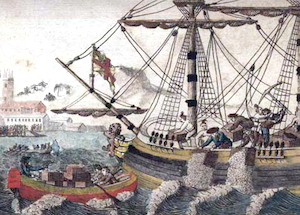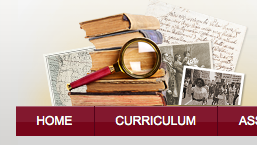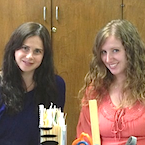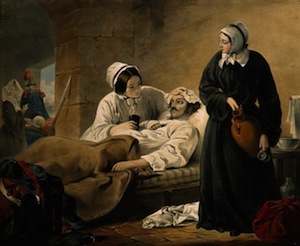Preparing for a New Year: Build Up, Don’t Tear Down
A MiddleWeb Blog

Whether you are a novice teacher, or you’ve been teaching for years, summer is a time for reflection: what did you do last year that worked? What didn’t work? What do you want to do differently?
There is a great deal of information available to educators looking to revamp their curriculum for the fast approaching new school year. While some movements and programs would have you tearing down everything you do, we suggest that, in many cases, it may be more valuable to incorporate new ideas rather than to remake your entire program.
Recognizing when overhauls are needed
This is not to imply that a total re-imagining of the classroom is not sometimes necessary. A teacher who has the students read through the textbook and answer the questions in the back of the book day in and day out needs to completely rethink much of what they do as they consider how to provide a more engaging and meaningful learning environment.
But if you have students holding classroom debates, exploring historical games, and reading texts for author perspective, you likely have some awesome stuff going on. Don’t throw it away just because the last article you read touts Project Based Learning as the ne plus ultra of unit design.
Education is a life-long process. You can stay with the trend while staying true to yourself and your students’ needs. AND, importantly, you can build new content without scrapping everything you’ve done before.

In the same way, new ways to approach social studies education should be seen as avenues to enrich and support, rather than completely overwrite, existing curricula.
Centering on what students need
While it is commendable to take risks and try out new ideas in our classrooms, completely abandoning an existing curriculum is no more pedagogically sound than refusing to change anything. The information age has accelerated the rate at which new ideas in education can be introduced to classrooms around the country. This has led to a feeling that we are always behind the curve when it comes to the current educational zeitgeist.
There are a great many worthwhile debates about the purpose of social studies education and what our students need to understand by the time they leave our classrooms. However, there are also a great many fundamentals that are unlikely to change. In our classrooms, we (Aaron, Jody & Shara) think it is important that:
• Students are literate.
• Students understand the role of perspective in history.
• Students are able to connect and relate historical ideas to their own lives.
• Students are capable of seeking out and evaluating information on their own.
• Students are able to determine author bias.
• Students can apply historical truths to current events.
• Students feel compelled to act in the world, informed by civic understanding and historical experience.
There may be other concepts and skills that you have identified as essential for your students to achieve proficiency. What is important is that you have determined the fundamental elements that will guide your planning and instruction for the entire year.
Keep what works – tinker selectively
Every time we try out a new method of instruction, we are conducting an experiment within our classrooms. A good scientific study only changes one or two variables when testing a hypothesis.
It is hard to determine what does and does not work if we do not give ourselves the time to work out the kinks with new ideas and see how they stack up against previous lessons. When revisiting units and lessons from the previous year, identify the ones that already build toward the goals you have set for student learning. Keep what worked, and integrate new ideas into that framework. Limit yourself to two or three changes, whether pedagogical or procedural.
For the history classroom, it is critical that you also limit any changes to your content focus. It is often better to focus on meeting your goals for student skill development, and work on content goals once that element of your units is solid.
But don’t hesitate to explore new ideas

MindShift
Stanford History Education Group (SHEG)
MiddleWeb (of course!)
Facing History and Ourselves
Edudemic
Edutopia
NCSS SmartBrief
Education Week Teacher
As you teach this year, reflect and keep track of what works and what doesn’t work for you and your students, and remember: it’s about your school, your students, your colleagues, your administration, and YOU as a teacher. If you’ve been building something awesome these past years, don’t feel like you have to tear it down in order to make improvements or keep up with the latest thing. Be true to yourself and your experience.
What are you keeping for next year? What are you scrapping? What are you adding to your curriculum?
Editor’s note: Now’s the perfect time to revisit the Future of History bloggers’ post for new history teachers.

Aaron
Aaron Brock has been a middle school social studies teacher in the Compton Unified School District for six years. He has a BA in History from California State University Northridge and received his teaching credential through UCLA’s TeachLA program. His love of history dates back to his own adolescence, and it is his goal to help students discover the aspects of history about which they can get excited. Follow Aaron on Twitter @HistoryBrock.

Jody & Shara
Jody Passanisi is an eighth grade U.S. History teacher at an independent school in the Los Angeles area. She earned her teaching credential and an M.S. in education from Mount St. Mary’s College and an M.A. in religious studies from the Graduate Theological Union.
Shara Peters teaches middle school History in a Los Angeles independent school. She earned her teaching credential from Hebrew Union College and her M.A. in teaching from American Jewish University. Follow Shara and Jody on Twitter @21centuryteachr. The two have also co-written articles for Ed Week Teacher and Scientific American.

































I appreciate your insights and will remember them this year. You may be aware by now that school systems sometimes introduce and require reforms that classroom teachers did not participate in vetting. Classroom teachers really do need to head up the leadership team for reforms.